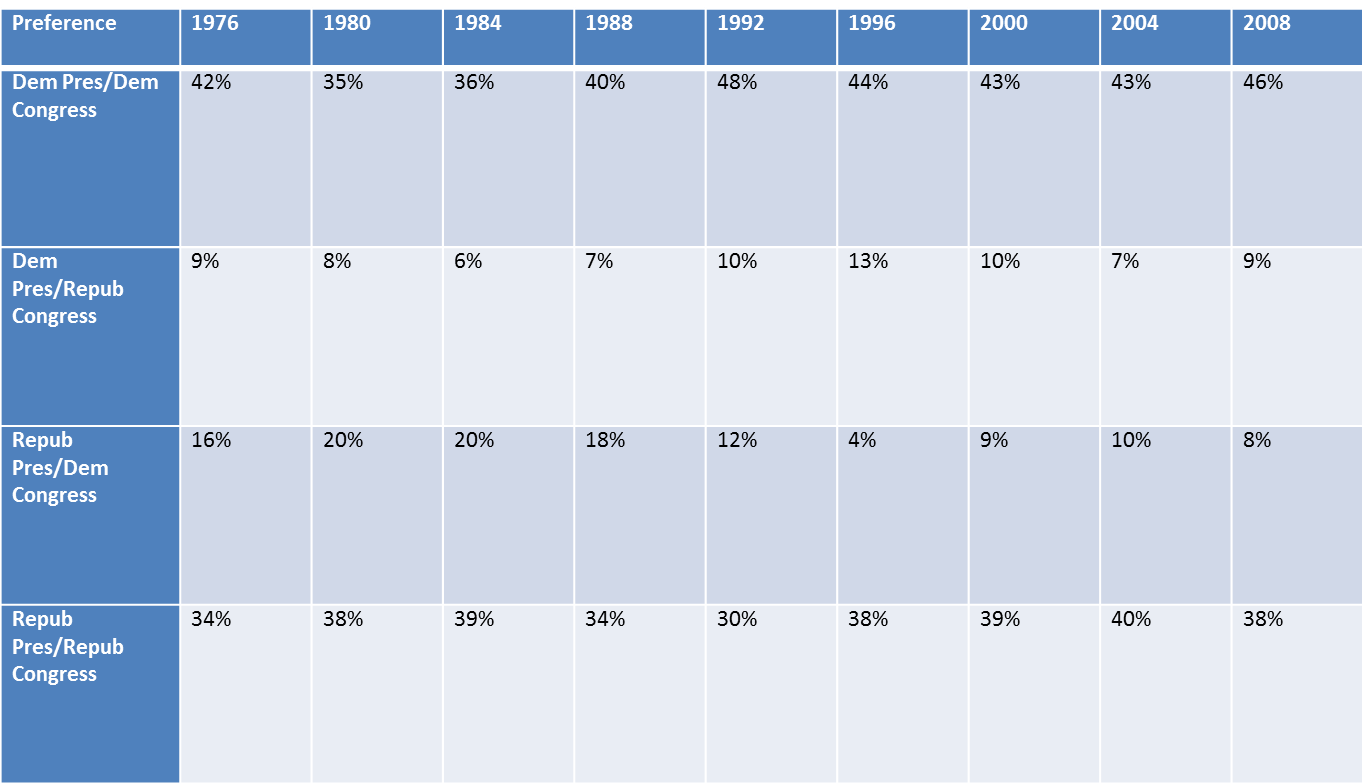Many analysts viewed last Tuesday’s special House election in Florida’s 13th district to replace longtime Republican Congressman Bill Young as a bellwether for the upcoming 2014 midterm congressional elections, particularly because they expected Obamacare to be the central issue in the Florida campaign and in November’s elections. Thus, the author of the New York Times’ election preview, which was headlined: “Florida Race for House Sets Stage for 2014”, described it as “a contest in the first race of the 2014 battle for control of Congress, with both parties hoping for a victory and watching carefully how President Obama’s health care law may affect the outcome.” The prevailing media perspective did not change in the aftermath of Republican David Jolly’s narrow 48.5% to 46.6% victory over his Democratic opponent Alex Sink. In a not uncharacteristic post-election interpretation, the Economist wrote: “On March 11th David Jolly, a Florida Republican, won a special election to the House of Representatives by relentlessly bashing Obamacare. His party hopes to use the same tactic to hold the House and capture the Senate in November. ” Similarly, a Washington Post article opined that “Jolly’s win in a Gulf Coast district just west of Tampa illustrated the political toxicity of the law known as Obamacare. Jolly favored repealing and replacing the law, which was a central focus of the campaign, while his Democratic opponent did not.”
But did Jolly really win the special election by “relentlessly bashing” Obamacare – and will that tactic make a difference in who controls Congress come November? The answers are not as clear cut as many analysts would have us believe. It is true that Jolly ran on a platform that included repealing Obamacare. But Sink’s stated position, which was to fix Obamacare, rather than repeal it, actually had strong support among likely voters, at least in the limited polling data* I was able to review. For example, in a poll of likely voters conducted by St. Leo University, 40% of respondents wanted to keep Obamacare but make changes to fix some of the problems, compared to 20% who wanted to repeal it and replace it with a different health care plan, and only 20% who wanted repeal and a return to the pre-Obamacare status quo.
Of course, one needs to be cautious in using polling data to infer voters’ motivations. One difficulty is that those responding to surveys can only express an opinion on issues about which they are polled. If voters are only asked about Obamacare, it will seem to loom large in their decision calculus. Moreover, responses differ according to what options are available. For example, this St. Petersburg poll of likely voters only asked respondents about their views on two issues: Obamacare and illegal immigration. And on Obamacare, 35% of those surveyed said they supported repeal, 34% leaving it alone, and 27% advocated repeal once a “better plan” is in place. Without specifying the details of that “better plan”, however, it is hard to interpret the results. Does that mean a plan that is Obamacare without the blemishes, which was Sink’s stated position? Similarly, in the St. Leo poll, it is hard to know what the 20% who wanted to replace Obamacare “with a different plan” had in mind, and how closely that option aligned with Sinks’. (I did not see any crosstabs in either poll by which to judge the candidates’ respective supporters’ views on Obamacare.) Note that many of the ads attacking Sink for her support of Obamacare, such as this one by the Chamber of Commerce, did not necessarily advocate for its repeal. Instead, they targeted its impact on Medicare payments.
So it’s not clear that Jolly’s message to repeal Obamacare carried the day.
In taking stock of Jolly’s victory, it is also helpful to remember that the smaller voter turnout characteristic of a special election is not always a reliable indicator of who will vote during a normal midterm election cycle. Note that while Sink appeared to have a slight lead based on early voting heading into Tuesday’s election, Jolly evidently benefited from a better Election Day turnout. However, the election drew only about 184,045 voters, and Jolly won victory over Sink by less than 4,000 votes. Pre-election polls indicated that Jolly’s support was stronger among the older white voting population that is more likely to turn out in a special election. By comparison, in 2012 the long-time incumbent Young won this district by a much larger margin, 16% over his Democratic opponent, than did Jolly on Tuesday even though President Obama narrowly carried the district by about 50% to 49% in the presidential race. Of course turnout in that presidential year was almost 330,000 voters – much higher than it is likely to be in the coming mid-term election. However, in the 2010 midterm, turnout in Florida’s 13th district, (which encompassed slightly different territory) was almost 267,000 – much higher than what we saw in last Tuesday’s special election. (According the Florida Secretary of State’s office, Republican voters constituted about 38% of voters in the district, Democrats about 35%, and Independents about 23%, but I don’t know the partisan breakdown of Tuesday’s voting pool.) So Jolly may have benefited by the smaller size and composition of Tuesday’s electorate.
Nor was this election only about Obamacare – voters were inundated with ads targeting Sink’s handling of a pension fund, Jolly’s views on entitlement reform including Social Security, and climate-change related issues including flood control, in addition to immigration. All of this makes me much more skeptical than are media pundits regarding what the results of Tuesday’s election tell us about the likely impact of Obamacare come November. Keep in mind that Republican control of the House is probably not at stake in 2012, regardless of how large Obamacare looms in voters’ decision calculus. And in the Senate races in which Democrats are vulnerable, Obamacare is only one of a myriad of issues, including jobs and the state of the economy, that are likely to influence outcomes. Finally, I expect most Democratic candidates to run on a platform of “mending” Obamacare, which may prove more appealing to many moderate voters than calls to fully repeal it.
So, does Tuesday’s special election result in Florida’s 13th congressional district provide an accurate preview of election events to come? Probably not nearly as much as some media pundits will have you believe.
*Thanks to Kate Hamilton for research on the polling data I referenced here.


